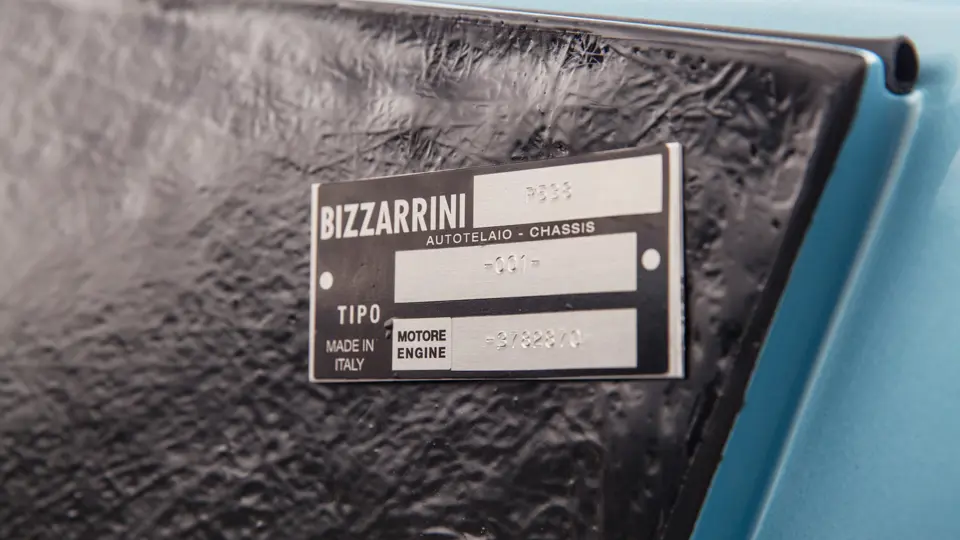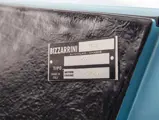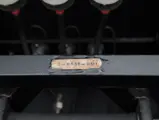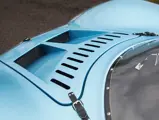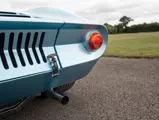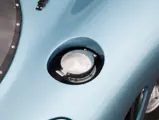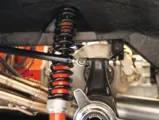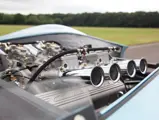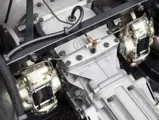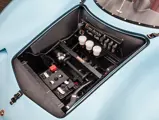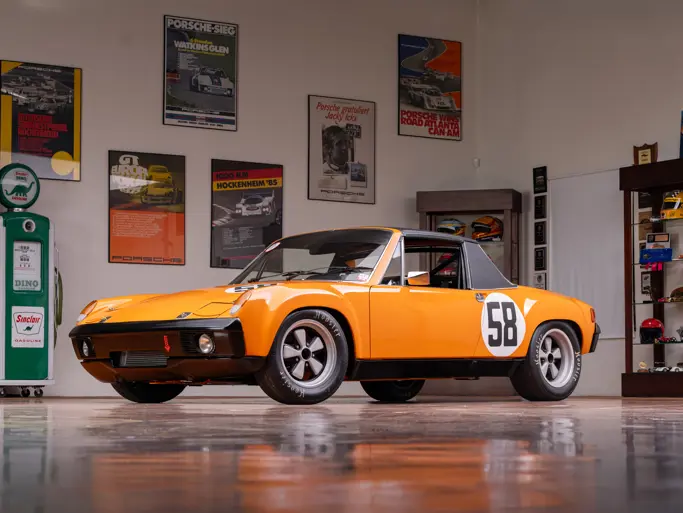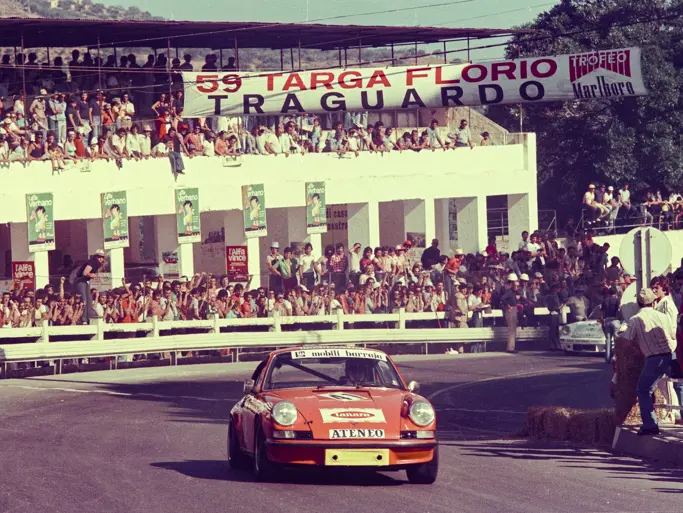
1976 Bizzarrini P538
{{lr.item.text}}
$700,000 - $900,000 USD | Not Sold
{{bidding.lot.reserveStatusFormatted}}
- Genuine Bizzarrini-built example; authenticated by noted marque expert Jack Koobs de Hartog
- Offered for the first time in over two decades
- Sensational restoration completed in 2015
- Ideal for vintage racing and concours presentation
- Giotto Bizzarrini’s purest racing creation
Please note this title is in transit.
365 bhp, 5,359 cc OHC 90-degree Chevrolet V-8 engine with four Weber 45 DCOE carburetors, five-speed ZF manual transaxle, independent front suspension with double wishbones, coil springs, tubular shock absorbers, and an anti-roll bar, rear suspension via de Dion axle, double wishbones, coil springs, and tubular shock absorbers, and four-wheel hydraulic disc brakes, with a rear inboard. Wheelbase: 99 in.
Giotto Bizzarrini has long been recognized as one of the most pivotal figures in 1960s Italian sports car engineering. Starting as a test driver for Alfa Romeo in the 1950s, Bizzarrini contributed to the Giulietta’s chassis before moving on to Ferrari, where he helped develop the fabled Testa Rossa. These successes led to his most noted triumph as leader of the team responsible for the legendary 250 GTO. However, Bizzarrini was seemingly never quite satisfied with his employers, leaving Ferrari to open his own consultancy in 1962. Partnering with Iso, the engineer designed the Grifo and Rivolta, projects that led to a friendship with the models’ exterior designer, the famed Giorgetto Giugiaro.
In 1963, Bizzarrini finally began building cars under his own name, developing Iso’s A3/C into his eponymous 5300 Strada and Corsa models. The engineer’s obsession with racing had once again marginalized him from his employer, as Iso was more interested in building production road cars than competition machines. Eschewing the Italian V-12 tradition, Bizzarrini chose to equip his new models with the prodigious Corvette V-8 coming out of Detroit.
All of these elements came into play at the 24 Hours of Le Mans in 1966, when Bizzarrini entered a brand-new racing spider clothed in a fabulously low and curvaceous body penned by Giugiaro and equipped with a 5.3-liter Chevy V-8. Dubbed the P538 (representing the 5.3-liter eight-cylinder engine and its posteriore placement), the new car followed FIA prototype regulations, if only barely. Reinterpreting the rules that cars must provide passenger seating and room for luggage (as in a true production GT car), Bizzarrini positioned the driver dead center, with the passenger seat as a pod to the left and a luggage area in a similar compartment to the right.
Despite the P538’s immense promise, Bizzarrini’s mismanagement and changes in the racing formula conspired against it. The engineer saw his finances sink into dire circumstances that eventually forced him to declare bankruptcy, and the company’s holdings were sold off in 1970. It mattered little, as the FIA changed displacement limits to a three-liter formula beginning in 1968, essentially eliminating any hope the model had in European endurance racing.
Privateers in Can-Am and other Formula Libre venues remained interested though, so a small market continued for the P538, with Bizzarrini building a handful of customer-ordered cars. As the years passed, the timeless beauty of the P538’s exterior became more evident, and vintage racing grew in popularity; accordingly, original Bizzarrini foreman Salvatore Diomante was approached to build several new cars, which differed in minor ways from Bizzarrini’s original build technique. It is believed that Bizzarrini contributed to a number of these cars, employing his wife, Rosanna, to help with body fabrication.
While the exact number of original and Diomante-built P538s is a matter of debate, four cars were produced by Bizzarrini during the 1960s. Three additional cars, including this example, were built by he and his wife, Rosanna, during the following decade. Two of which were built at Diomante in Turin during this time. Diomante also built additional P538s in the 1980s and 1990s, though it is currently unclear how many have been produced since that time. Regardless, as Giotto Bizzarrini’s purest racing car, the P538 spider is a landmark achievement in the designer’s portfolio.
Discovered in France in the early 1990s, this car was purchased by Roger Hurst, of Kent, United Kingdom, who re-sold it in 1995 to the consignor, one of the original founders of the Chequered Flag International (one of the niche’s oldest active international dealers of fine motor cars). Knowing what a treasure he had located, the consignor domiciled the car for nearly 20 years, keeping it out of the sight and knowledge of the growing Bizzarrini niche.
In 2009, in an attempt to clarify the car’s early history, the consignor conferred with Bizzarrini expert Jack Koobs de Hartog to assess the P538, which was soon to undergo restoration. Carefully inspecting the frame and build technique, the marque specialist concluded that the car exhibited the welding, materials, and overall construction used on the later cars built by Bizzarrini himself. Mr. Koobs took several photographs of the unrestored chassis, body, and parts and presented them to Mr. Bizzarrini for his opinion. The aging engineer quickly identified the hallmarks of his handiwork and concluded he had built the frame in the late 1960s and that his wife, Rosanna, had constructed the fabulous bodywork to Giugiaro’s original design.
With this claim of authenticity at his back, the consignor proceeded with a full restoration to period specifications, totaling approximately $250,000 in invoices. This work included sourcing a period-correct 5.3-liter Corvette engine and rebuilding it to proper specifications, with period heads, a steel crank, rods, and forged alloy pistons. The heads have been ported and capped to run on unleaded fuel. The external engine features are also of period appearance, including the alloy valve covers, water pump, pulleys, alternator, and four 45 DCOE Weber carburetors. The engine has been dynamically balanced, tuned, and properly run in, and it is highly presentable. The gearbox is a brand-new ZF Synchroma 5DS-25 five-speed unit, number 006140. Additional work included reupholstering the seats with dark red leather and repainting the exquisite body in a lovely shade of metallic blue, the same color used by Lamborghini in period.
Essentially unknown to today’s Bizzarrini enthusiasts, this awe-inspiring P538 has not been publicly offered in decades and is now making an unexpected return to the world of collectible sports-racing cars. Handsomely finished in its new cosmetic livery, this stunning prototype racing spider is ideally poised for re-entry to the world of motorsports competition, perfect for venues like Goodwood and Laguna Seca. This P538 is a rare example of the famous engineer’s most extraordinary racing model, and it is a must-have acquisition for the Bizzarrini enthusiast.

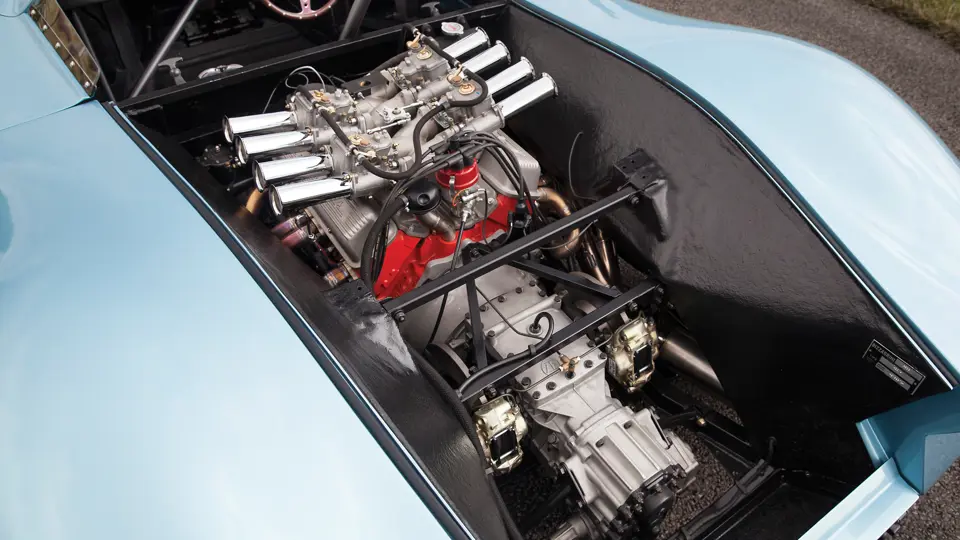


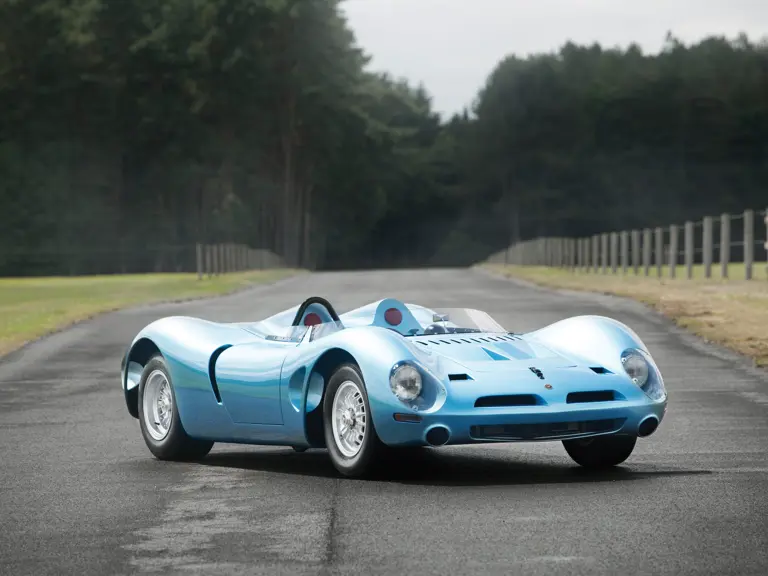
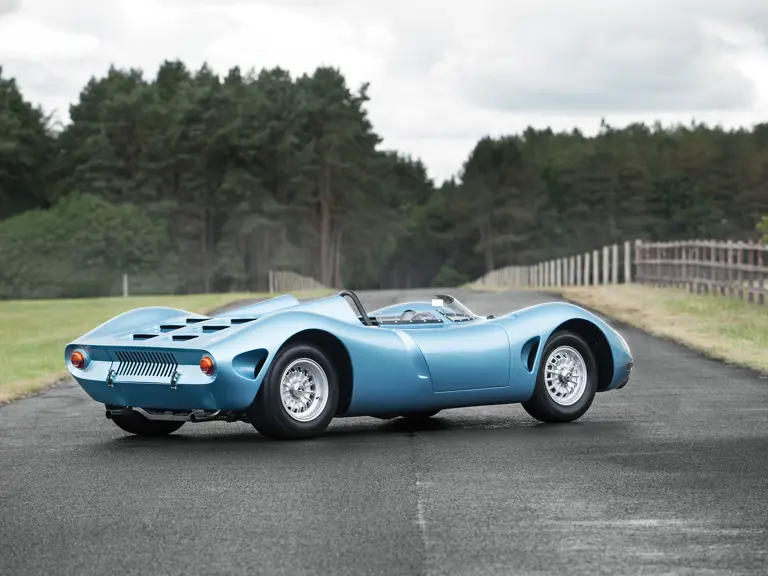

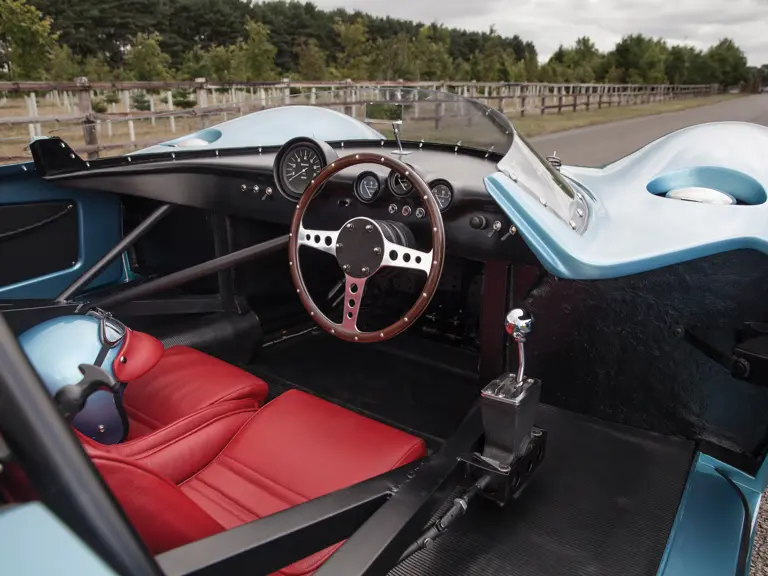
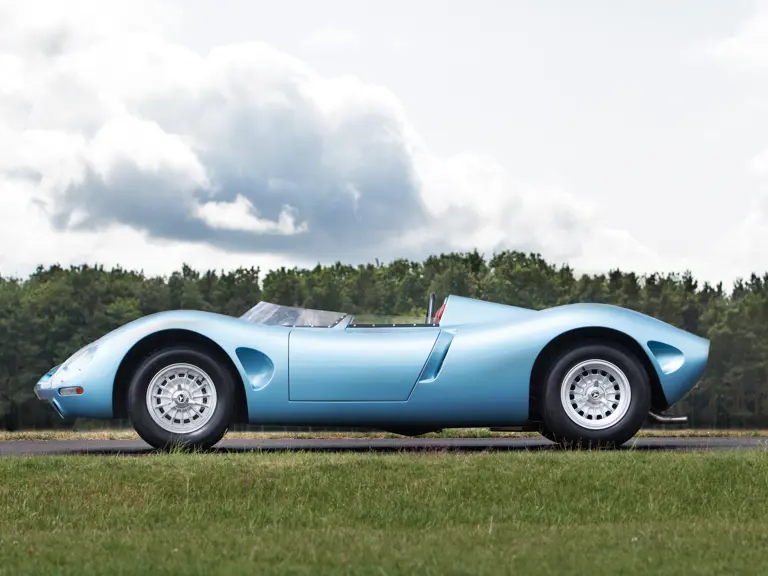
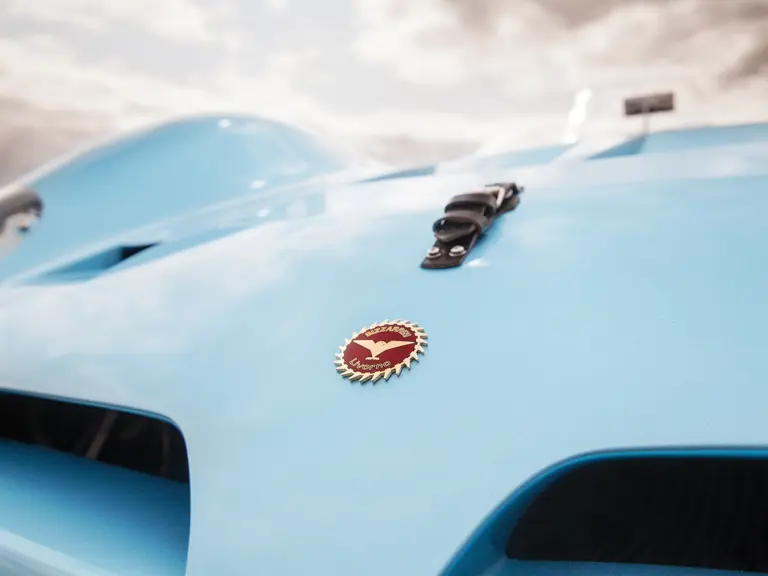
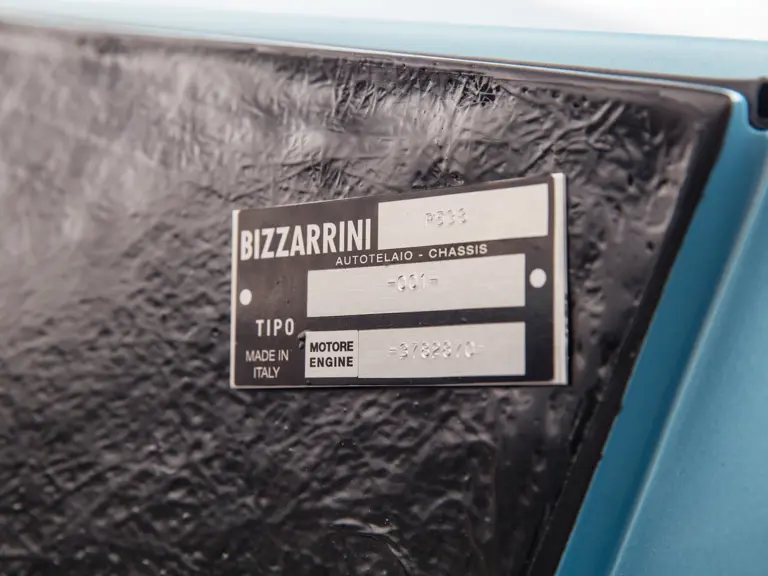


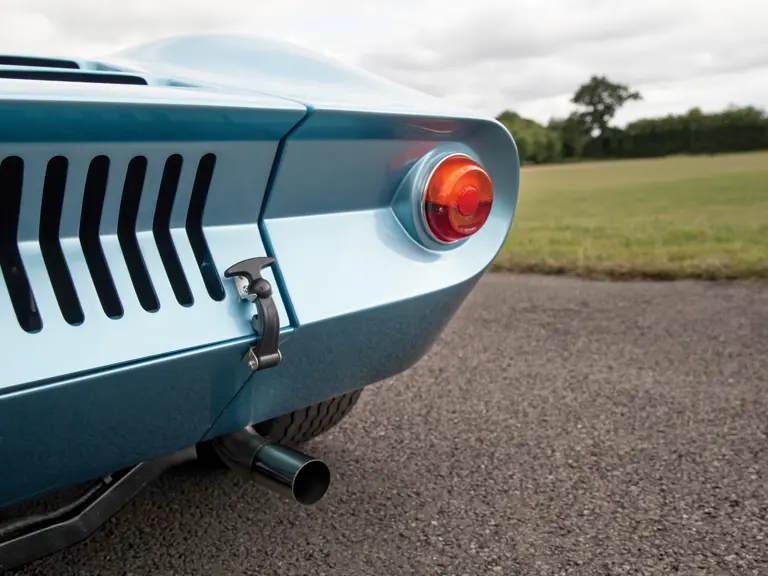
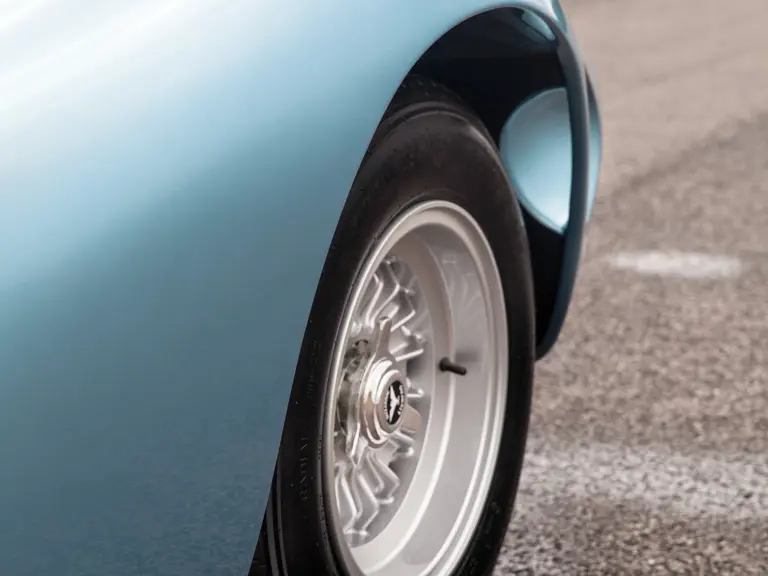
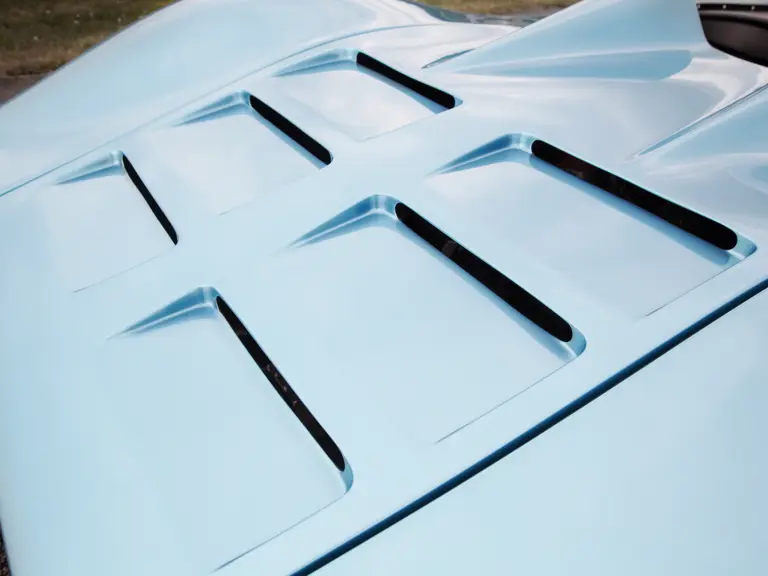
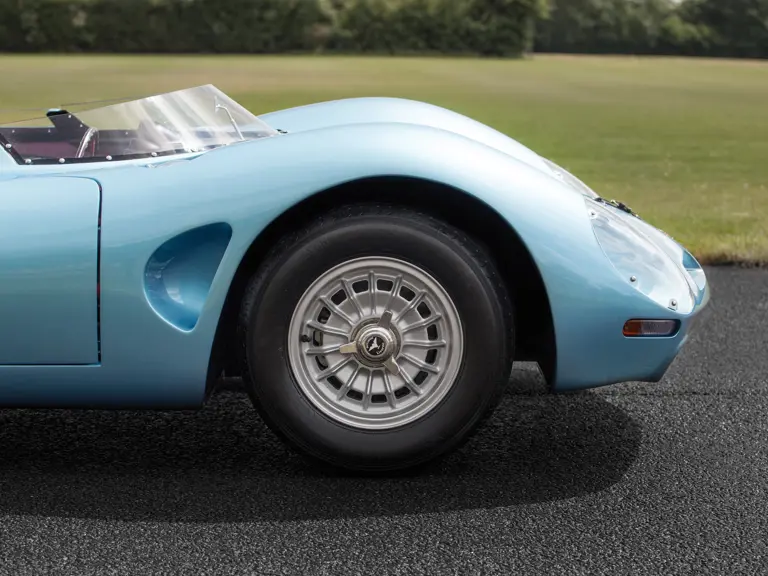
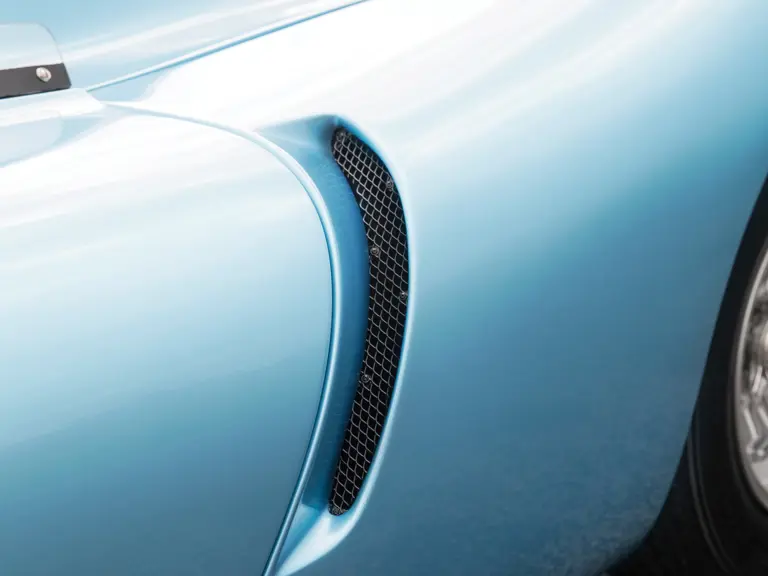
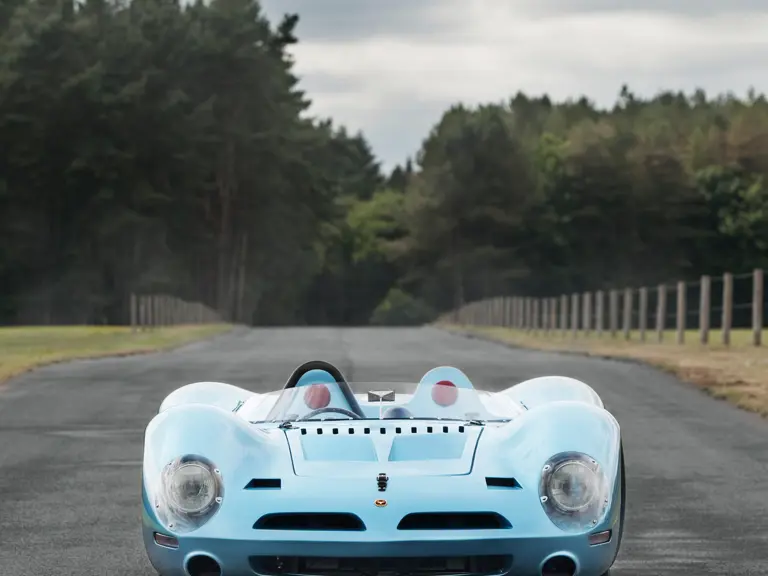


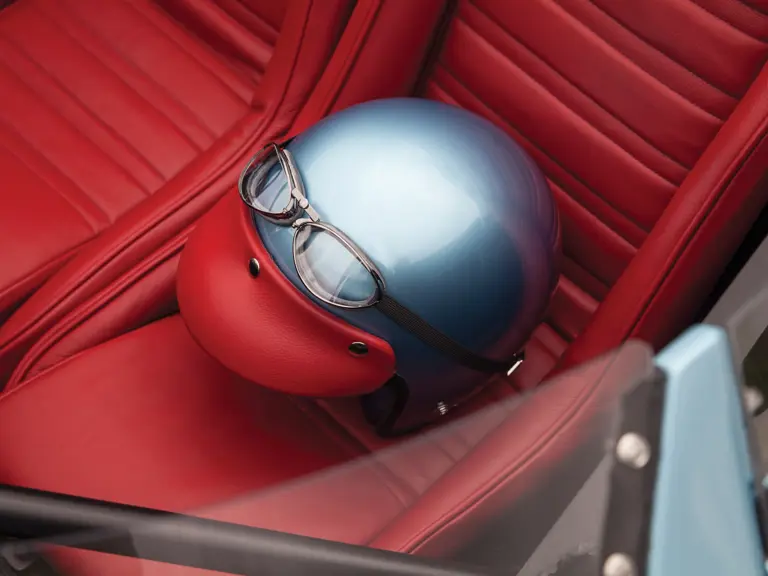



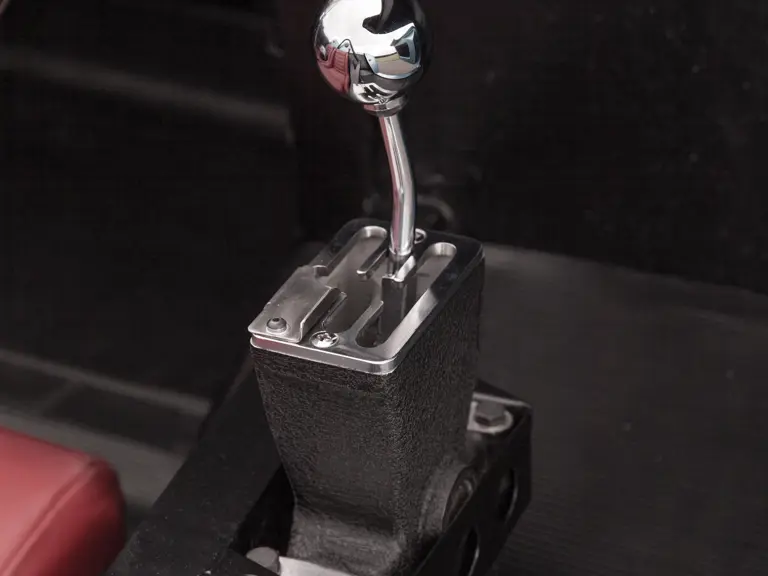
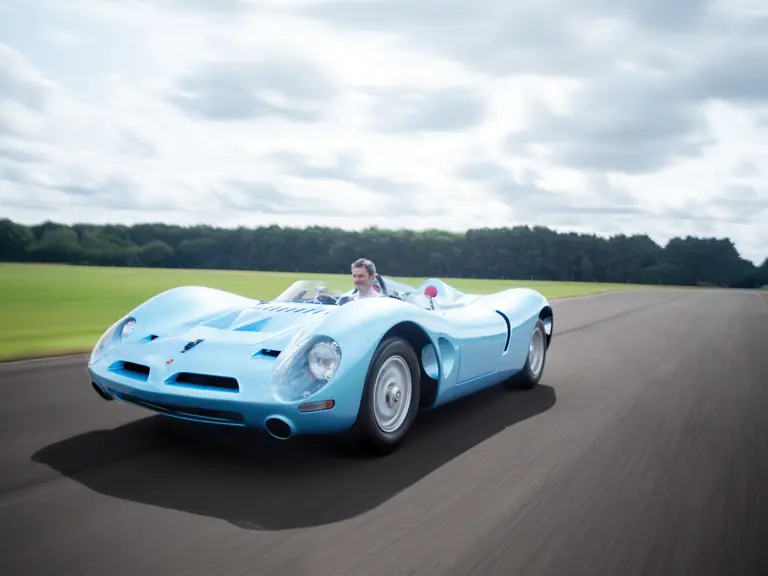
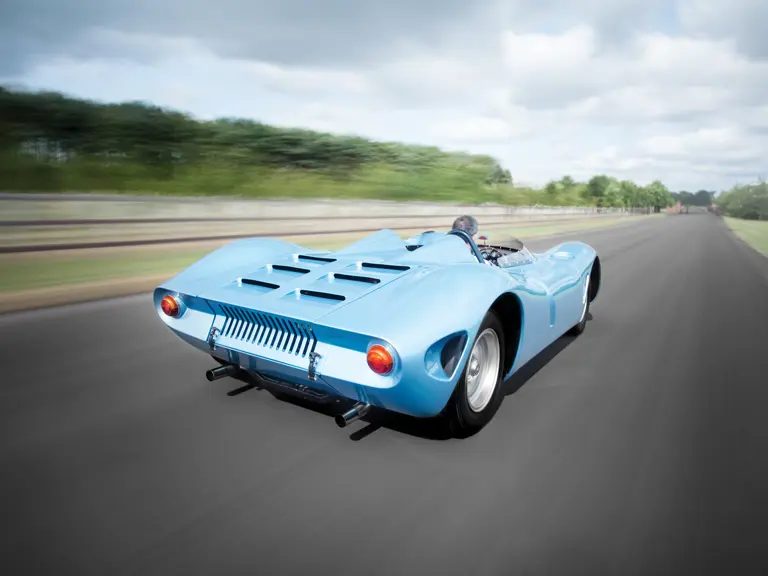


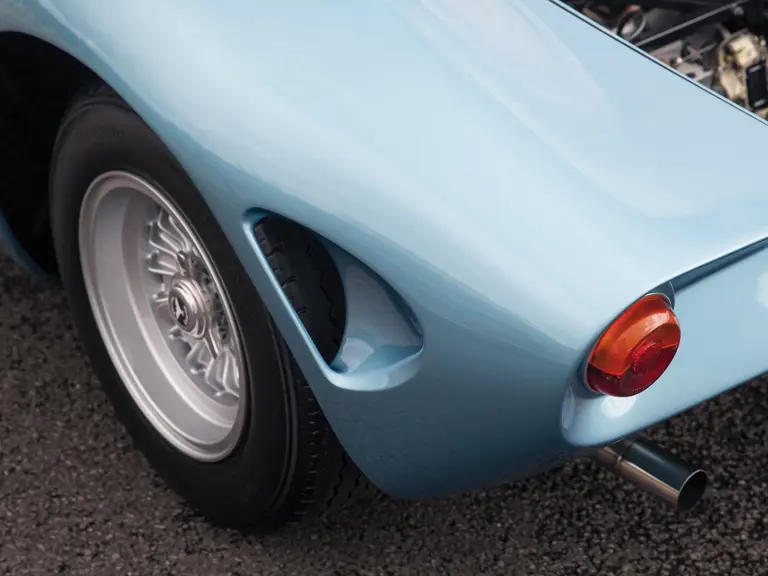
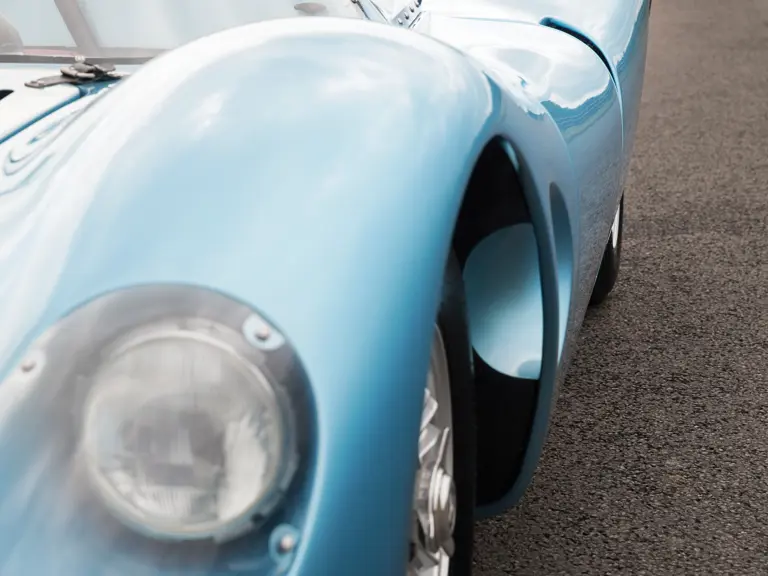
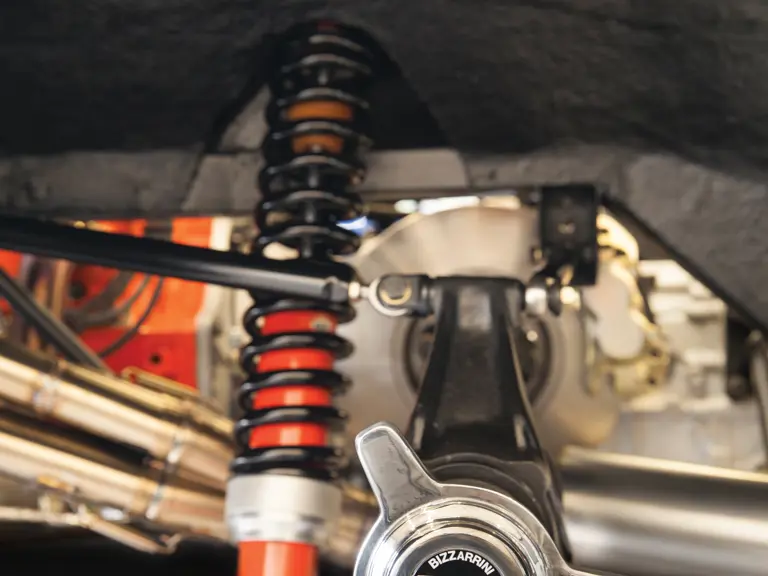
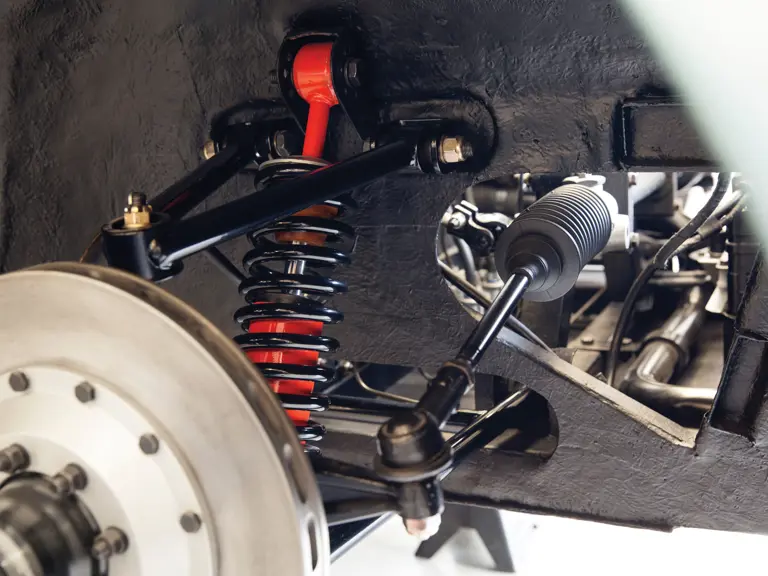
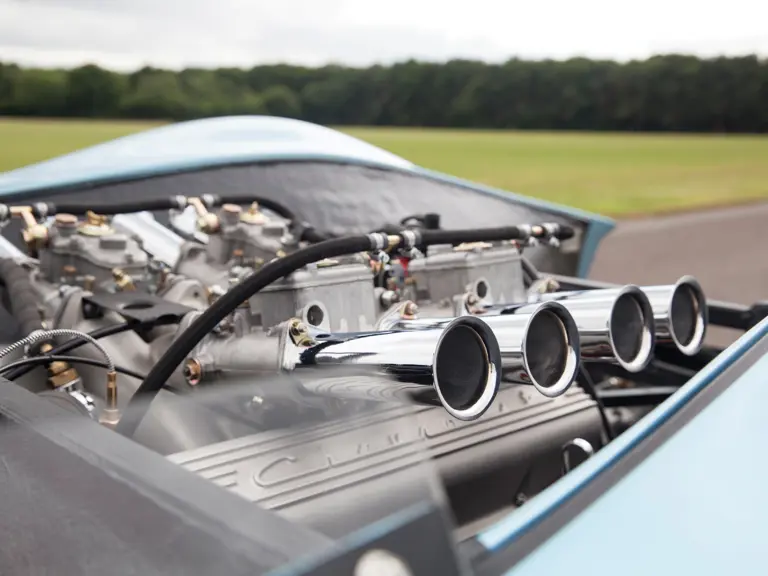
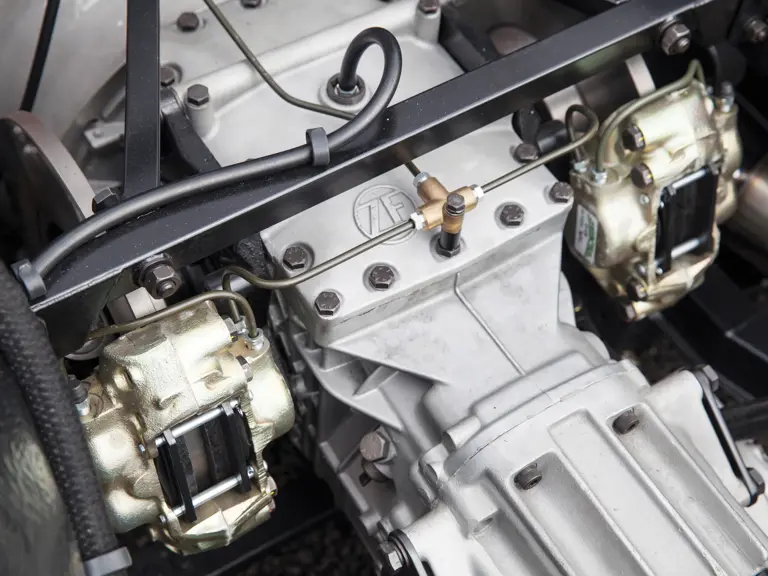


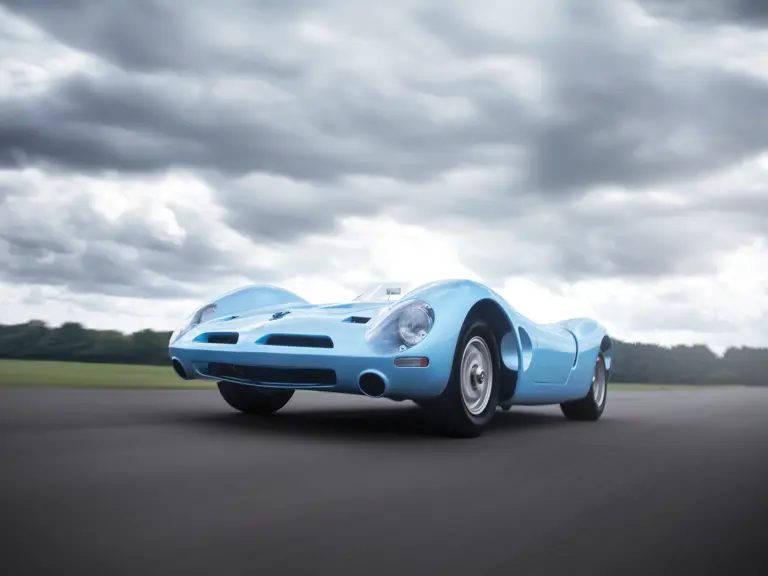

 | Monterey, California
| Monterey, California


